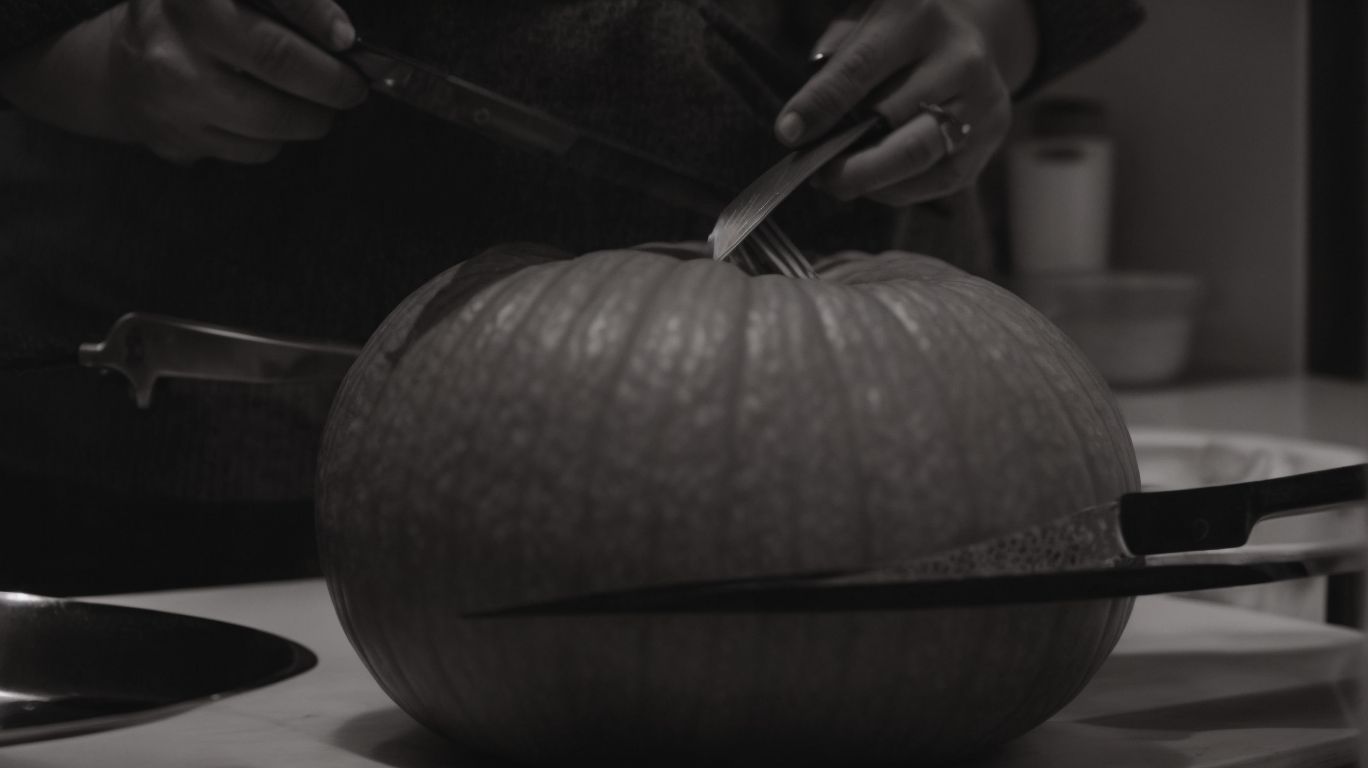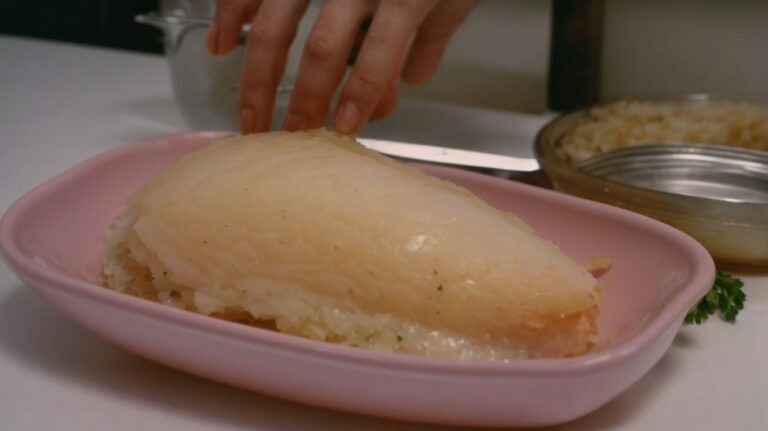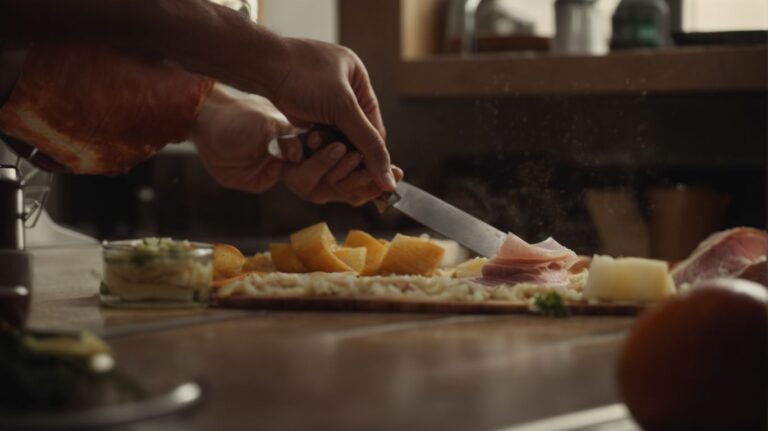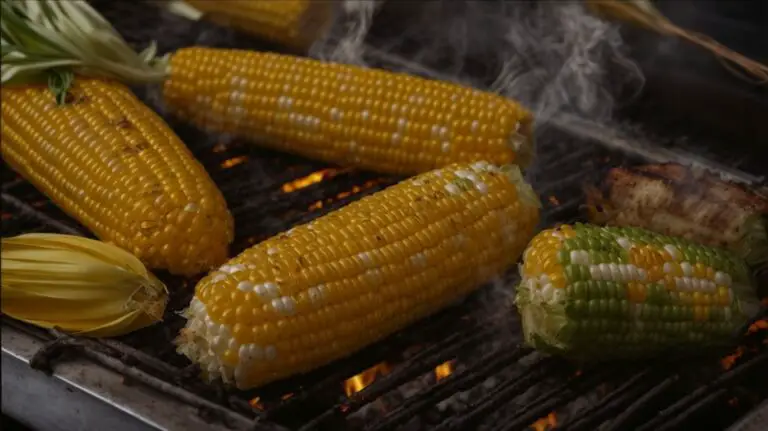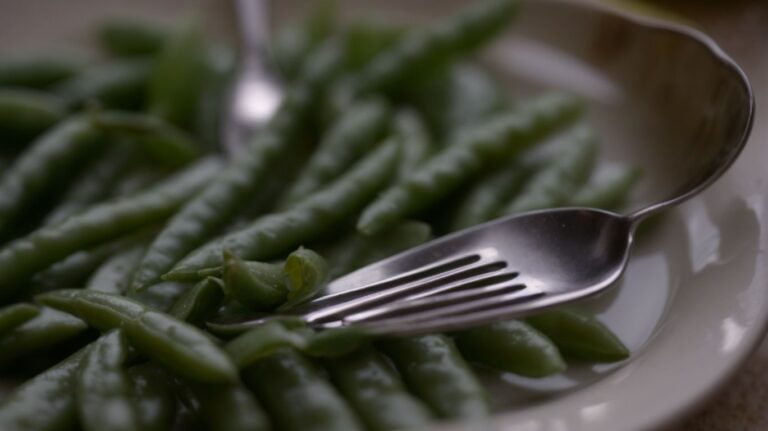How to Cook Pumpkin Into Puree?
Have you ever wondered what exactly pumpkin puree is and how to make it at home?
Explore the benefits of cooking with pumpkin puree, including its nutritional value and versatility in recipes. Learn how to choose the right pumpkin for puree and follow a step-by-step guide to cooking your own pumpkin puree. Discover tips for storing and cooking with pumpkin puree to enhance its flavor.
Find out how to enjoy your homemade pumpkin puree to the fullest!
Key Takeaways:
What is Pumpkin Puree?
Pumpkin puree is a smooth, creamy mixture made by blending or processing cooked pumpkin flesh until it reaches a velvety consistency.
When you create pumpkin puree at home, you have complete control over the process and ingredients, ensuring a fresh and natural flavor unlike anything you can find in a canned version. The texture of homemade pumpkin puree is rich and luxurious, with a vibrant orange hue that speaks to its freshness.
To make your own pumpkin puree, start by roasting or boiling chunks of pumpkin until they are soft and the flesh can be easily scooped out. After removing the seeds and skin, blend the pumpkin flesh in a food processor or blender until it transforms into a silky, velvety puree.
Benefits of Cooking Pumpkin Puree
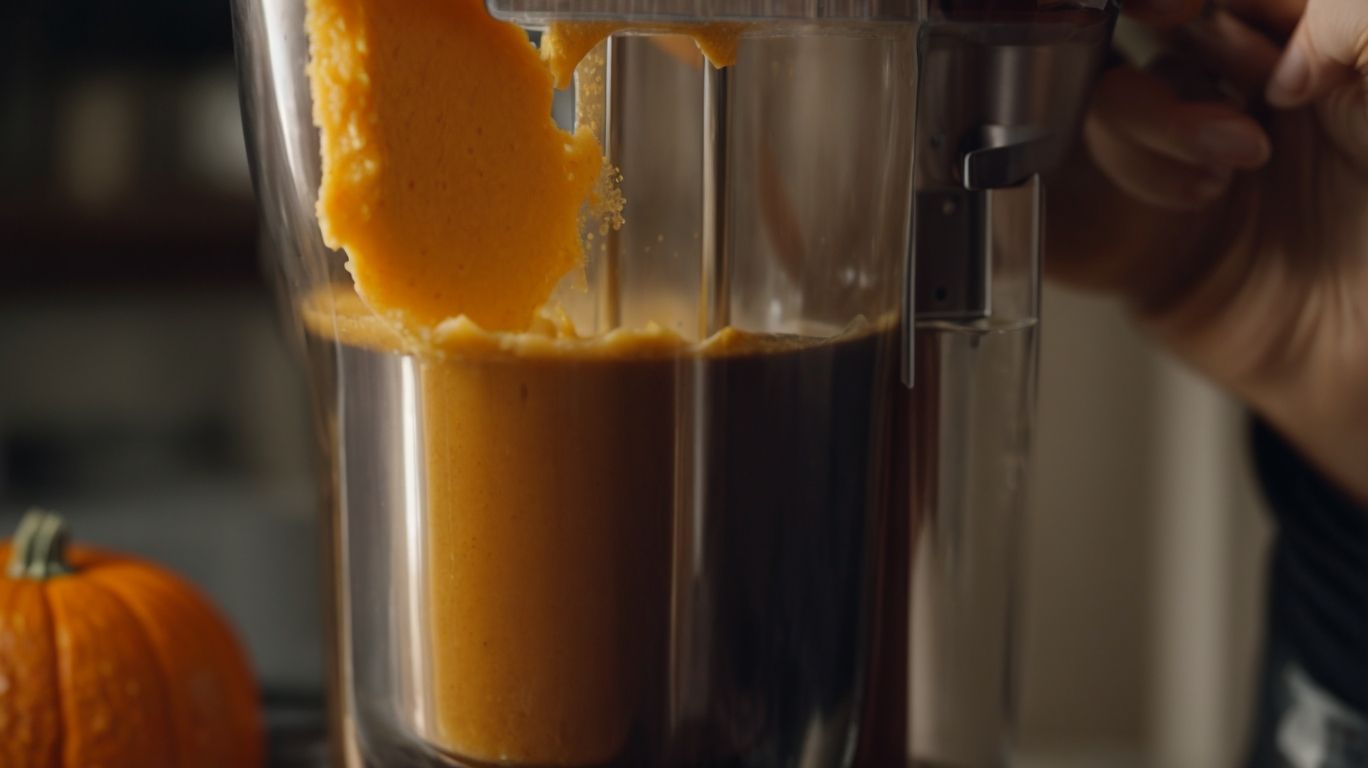
Credits: Poormet.Com – Carl White
The benefits of cooking pumpkin puree are multifaceted, from enhancing the flavor of recipes to providing a healthier alternative to store-bought options.
Making homemade pumpkin puree offers a freshness that store-bought versions often lack. By utilizing fresh pumpkins, you can ensure the quality and taste of the puree in your dishes. Homemade puree retains more of the nutrients and natural flavors of the pumpkin, adding a wholesome element to your cooking.
One of the significant advantages of creating your pumpkin puree at home is the ability to customize it to suit your preferences. You have control over the ingredients used, allowing you to adjust flavors, sweetness levels, and even texture to meet the specific requirements of your recipes.
Nutritional Value
Exploring the nutritional value of homemade pumpkin puree reveals a rich source of vitamins, minerals, and antioxidants essential for a balanced diet.
Pumpkin puree is particularly rich in vitamins A, C, and E, which are crucial for maintaining healthy skin, boosting immunity, and supporting overall well-being. This homemade puree is packed with dietary fiber, aiding in digestion and promoting satiety. The antioxidants found in pumpkin puree help reduce inflammation and protect cells from damage.
To further elevate its nutritional profile, incorporating pumpkin seeds into the puree can enhance its benefits. Pumpkin seeds are a great source of magnesium, zinc, and iron, providing added nutritional value by supporting bone health, immune function, and energy production.
Versatility in Recipes
The versatility of pumpkin puree in recipes is unmatched, allowing for the creation of both sweet treats like pumpkin pie and savory delights including soups and stews.
Regarding sweet dishes, pumpkin waffles are a popular choice, infusing a subtle autumn flavor into the breakfast favorite. In the realm of savory dishes, pumpkin hummus adds a unique twist to the traditional dip, incorporating a creamy texture and hint of sweetness.
For a healthy snack option, roasted pumpkin seeds are a crunchy delight that can be flavored with various seasonings like cinnamon and sugar or spicy chili powder.
How to Choose the Right Pumpkin for Puree?
Selecting the right pumpkin for making homemade puree involves choosing a large, sugar pumpkin, cutting it into manageable pieces with a sharp knife for easier preparation.
Regarding picking the ideal pumpkin for creating that velvety smooth puree, remember that the sugar pumpkin, often referred to as a pie pumpkin, is your best bet. These pumpkins are smaller in size compared to carving pumpkins, making them perfect for cooking purposes due to their sweeter and denser flesh.
The size of the pumpkin matters; opt for one that feels heavy for its size, indicating a higher moisture content and better taste once cooked. Before diving into the roasting process, make sure to use a sharp knife to cut the pumpkin into manageable pieces, as it’ll make the task easier and safer.
Step by Step Guide to Cooking Pumpkin Puree
A step-by-step guide to cooking pumpkin puree involves roasting pumpkin pieces on a baking sheet until tender, then blending the softened flesh into a smooth consistency.
Start by preheating your oven to 400°F (200°C) for that perfect pumpkin puree. Choose a small baking sheet, lined with parchment paper or a silicone baking mat, to arrange your pumpkin pieces in a single layer. Before roasting, ensure to drizzle olive oil over the pumpkin chunks and season with a sprinkle of salt and pepper for enhanced flavor.
The pumpkin pieces should roast for approximately 45-60 minutes, or until they are fork-tender. To check doneness, insert a fork into the thickest part of a piece; it should go in smoothly. Once the pumpkin is fully roasted, let it cool slightly before transferring the softened flesh to a food processor.
Preparing the Pumpkin
The initial step in preparing pumpkin puree involves selecting fresh pumpkins, cutting them open, and scooping out the soft flesh for further processing.
One of the integral aspects of selecting fresh pumpkins is to look for ones that are firm, heavy for their size, and free from any signs of mold or decay.
Once you have chosen the perfect pumpkin, it’s time to carefully cut the pumpkin in half using a sharp knife. Be cautious during this step to avoid any mishaps and ensure a smooth process ahead.
After the pumpkin is halved, the next crucial step is to remove the seeds and any stringy pulp surrounding them. This can be efficiently done using a spoon or an ice cream scoop to achieve a clean separation. Remember, using homemade pumpkin is key to enhancing the flavor of your final puree.
Roasting the Pumpkin
Roasting the pumpkin pieces in the oven intensifies their natural sweetness and imparts a rich, caramelized flavor to the puree.
When roasting pumpkin pieces, preheat the oven to 375°F for optimal results. Spread the pieces evenly on a baking sheet in a single layer to ensure even cooking. The roasting time typically ranges from 25-35 minutes, depending on the size of the pieces. During this process, the pumpkin undergoes a magical transformation, with its sugars caramelizing and intensifying, creating a deep, nutty flavor profile.
Blending the Pumpkin
Blending the roasted pumpkin flesh in a food processor or blender results in a velvety smooth puree ideal for various culinary applications.
To achieve the perfect consistency when making homemade pumpkin puree, it is essential to ensure the roasted flesh is completely cool before blending. This will not only prevent steam from building up in the equipment but also help in achieving a silky texture.
Using a food processor or blender allows for efficient blending, ensuring all chunks of pumpkin are broken down into a fine puree. The puree should have a creamy, almost velvety finish, without any lumps or fibrous bits remaining.
The beauty of making your own pumpkin puree lies in the freshness it offers. The homemade version boasts a vibrant color and a rich flavor that far surpasses its canned counterpart. You have full control over the thickness and sweetness, allowing you to customize it to suit your recipes perfectly.
How to Store Pumpkin Puree?
Storing homemade pumpkin puree involves refrigeration in airtight containers or freezing for longer preservation, ensuring its freshness and flavor are retained.
When refrigerating pumpkin puree, make sure to use a clean, airtight container to prevent any odors from permeating it. Stored in the refrigerator, pumpkin puree can last for about 5-7 days.
For long-term storage, consider freezing the puree.
- Freezing in ice cube trays allows for convenient portioning for future use in recipes.
- If freezing in larger quantities, use freezer-safe bags or containers, leaving some space for expansion.
The frozen pumpkin puree can maintain its quality for up to 6 months. Be sure to label the containers with dates to keep track of freshness.
When ready to use, thaw frozen puree in the refrigerator overnight or in a bowl of cold water. Use the defrosted puree in various recipes like soups, pies, muffins, or smoothies for a delightful pumpkin flavor.
Tips for Cooking with Pumpkin Puree
Enhance your culinary creations with pumpkin puree by incorporating it into pies, muffins, and other baked goods for a burst of flavor and moisture.
When substituting pumpkin puree in recipes, consider the texture and moisture content it adds. To maintain a balanced consistency, reduce the amount of liquid in the recipe slightly. Tweaking the spices can complement the earthy undertones of pumpkin puree. Sugar pumpkins are a fantastic choice for a sweeter taste profile, offering a richer flavor compared to other varieties.
- Experiment with adding pumpkin puree to soups, stews, and curries for a velvety texture and depth of flavor.
- For a healthier twist, swap out butter or oil in recipes with pumpkin puree to cut back on fat while enhancing the nutritional value.
Incorporating pumpkin puree in savory dishes can also elevate the overall taste profile, making it a versatile ingredient in your kitchen arsenal.
Substituting Pumpkin Puree in Recipes
A simple guide to substituting homemade pumpkin puree in recipes involves replacing other wet ingredients with equal quantities of puree for added moisture and nutritional benefits.
When swapping out oil, butter, or eggs with pumpkin puree, it’s crucial to consider the consistency and flavor profile of the original recipe. Pumpkin puree serves as a fantastic alternative to oil, imparting a subtle earthy taste to baked goods while offering a boost of vitamins and minerals. If a recipe calls for oil, pumpkin puree can be used in a 1:1 ratio. For butter substitution, simply swap it with an equal amount of pumpkin puree, keeping in mind that the texture might vary slightly. As for eggs, replace each egg with ¼ cup of pumpkin puree to achieve a moist and rich consistency in your dishes.
Enhancing the Flavor of Pumpkin Puree
Elevate the flavor profile of pumpkin puree in savory recipes by adding roasted pumpkin seeds, herbs, or spices for a delightful crunch and depth of taste.
Roasted pumpkin seeds not only add a crunchy texture but also bring a nutty and earthy flavor that enhances the overall dish. You can experiment with various herbs such as rosemary, thyme, or sage to introduce a layer of aromatic complexity to the pumpkin puree. Incorporating spices like cinnamon, nutmeg, or cumin can provide a warm and comforting undertone to your savory creations, balancing the natural sweetness of the pumpkin.
Conclusion: Enjoying Your Homemade Pumpkin Puree
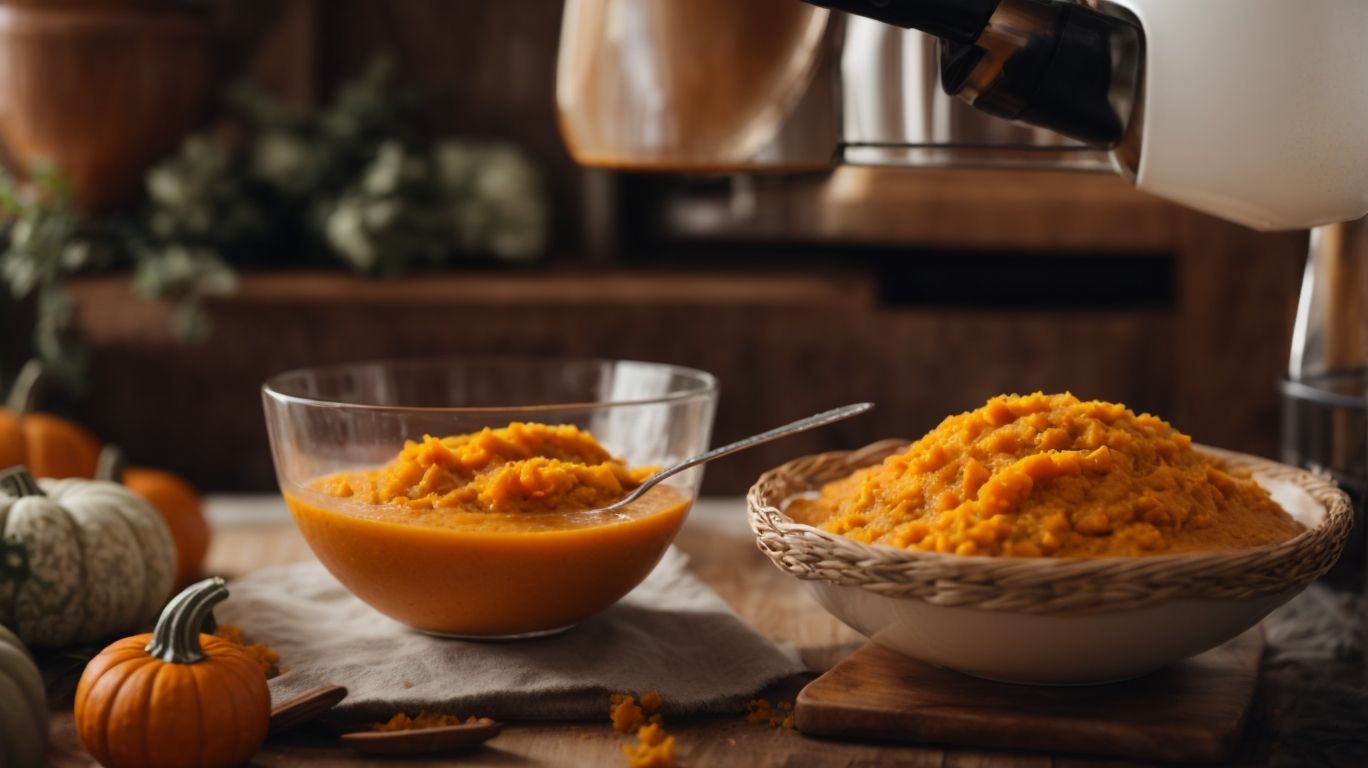
Credits: Poormet.Com – Austin Ramirez
In conclusion, savor the delicious results of your homemade pumpkin puree in a variety of recipes created with love and care on a large baking sheet.
Create mouthwatering pumpkin pies with a silky smooth texture, aromatic pumpkin spice lattes that warm the soul, and fluffy pumpkin pancakes that melt in your mouth.
Experiment with savory dishes like creamy pumpkin risotto, hearty pumpkin chili, or even pumpkin gnocchi paired with a sage butter sauce.
Embrace the versatility of pumpkin by incorporating it into soups, bread, muffins, and even desserts like pumpkin cheesecake or rich pumpkin custard.
Let your creativity run wild as you infuse each creation with the rich flavors of homemade pumpkin puree and watch your culinary masterpieces come to life.
Frequently Asked Questions
What is the best way to cook pumpkin into puree?
To cook pumpkin into puree, the best method is to first roast it in the oven. This will give the puree a richer and more intense flavor compared to boiling or steaming.
Can I use any type of pumpkin to make puree?
Yes, you can use any type of pumpkin to make puree. However, smaller pumpkins like sugar pie pumpkins are best for making puree as they have a sweeter and smoother flesh.
Do I need any special equipment to make pumpkin puree?
No, you do not need any special equipment. A good quality blender or food processor will work well for making pumpkin puree. However, a pumpkin scoop or spoon can make scooping out the seeds and flesh easier.
How long does it take to cook pumpkin into puree?
The cooking time for pumpkin puree will depend on the size and type of pumpkin, as well as the cooking method being used. On average, it can take anywhere from 30-60 minutes to roast a pumpkin for puree.
Can I freeze pumpkin puree?
Yes, you can freeze pumpkin puree. Simply pour the puree into an airtight container or freezer bag and store in the freezer for up to 6 months. Thaw in the fridge before using.
What can I use pumpkin puree for?
Pumpkin puree is a versatile ingredient that can be used in a variety of sweet and savory dishes. It is commonly used in pumpkin pie, but can also be added to soups, stews, pasta dishes, and even baked goods like muffins and cakes.

